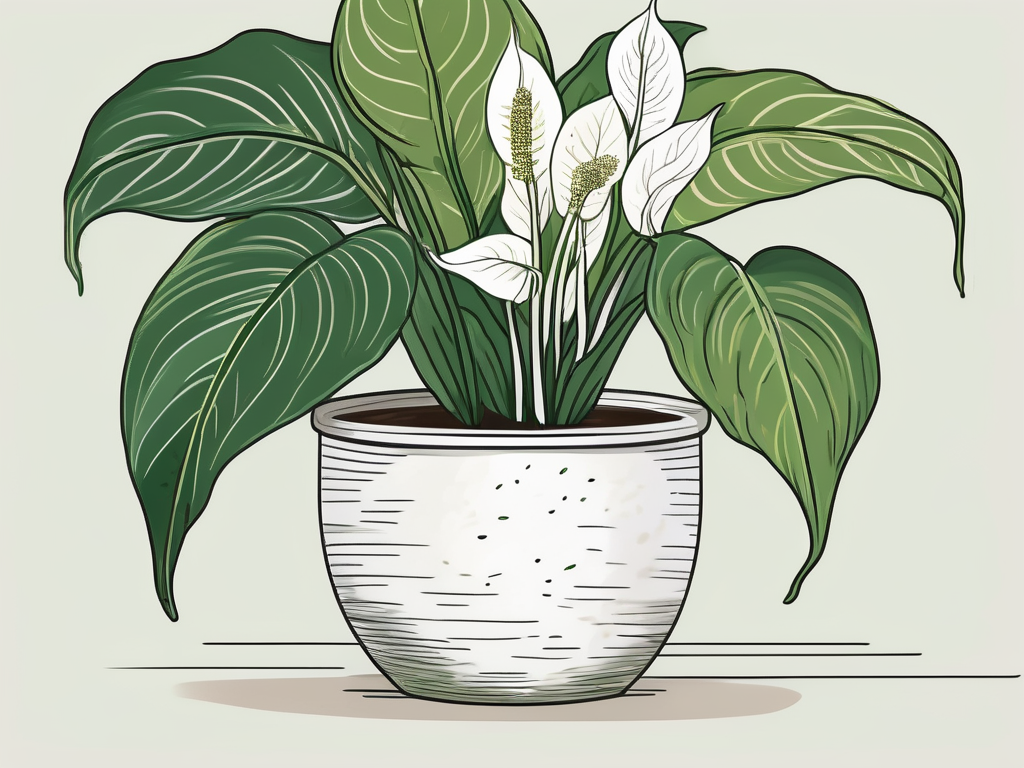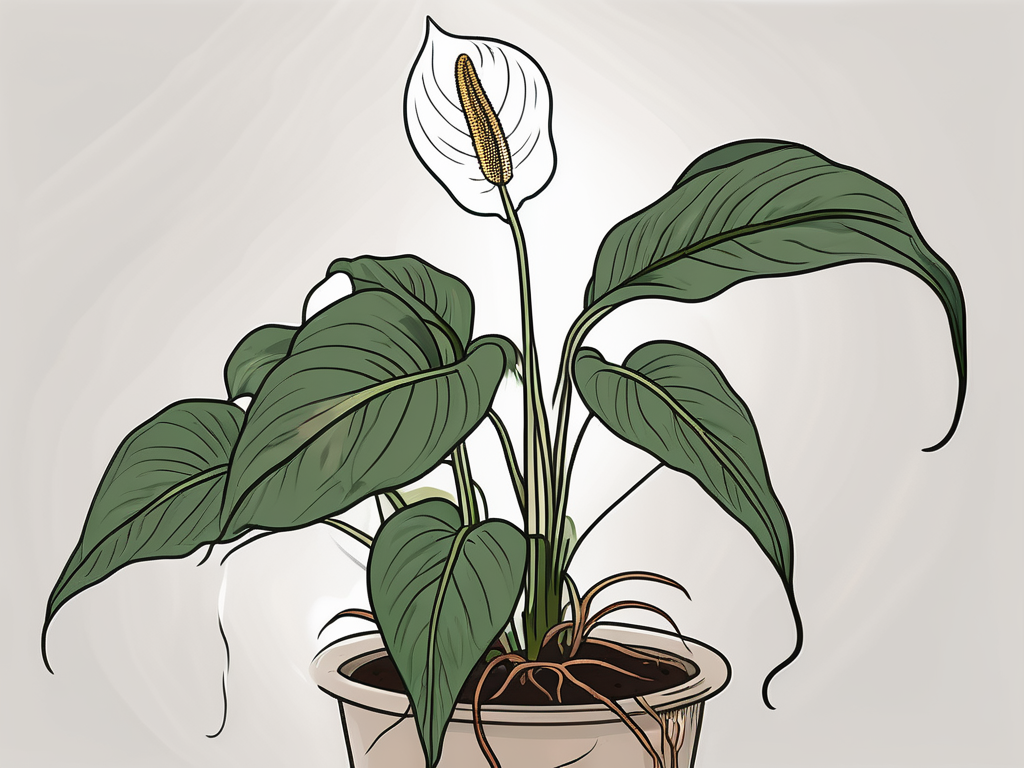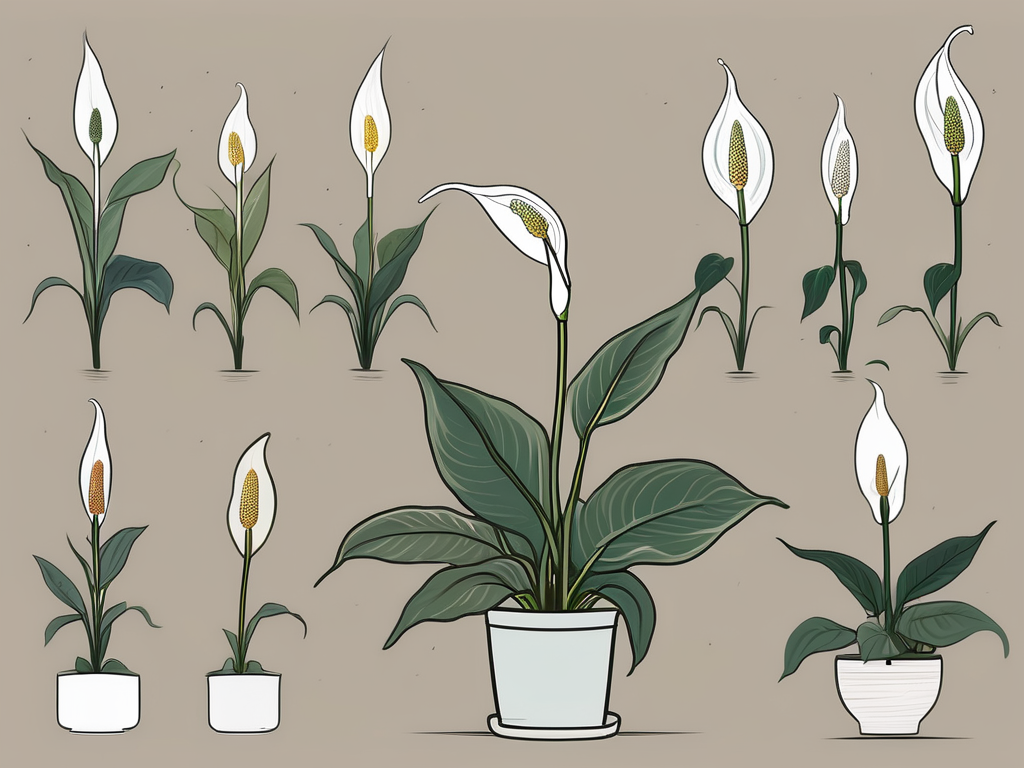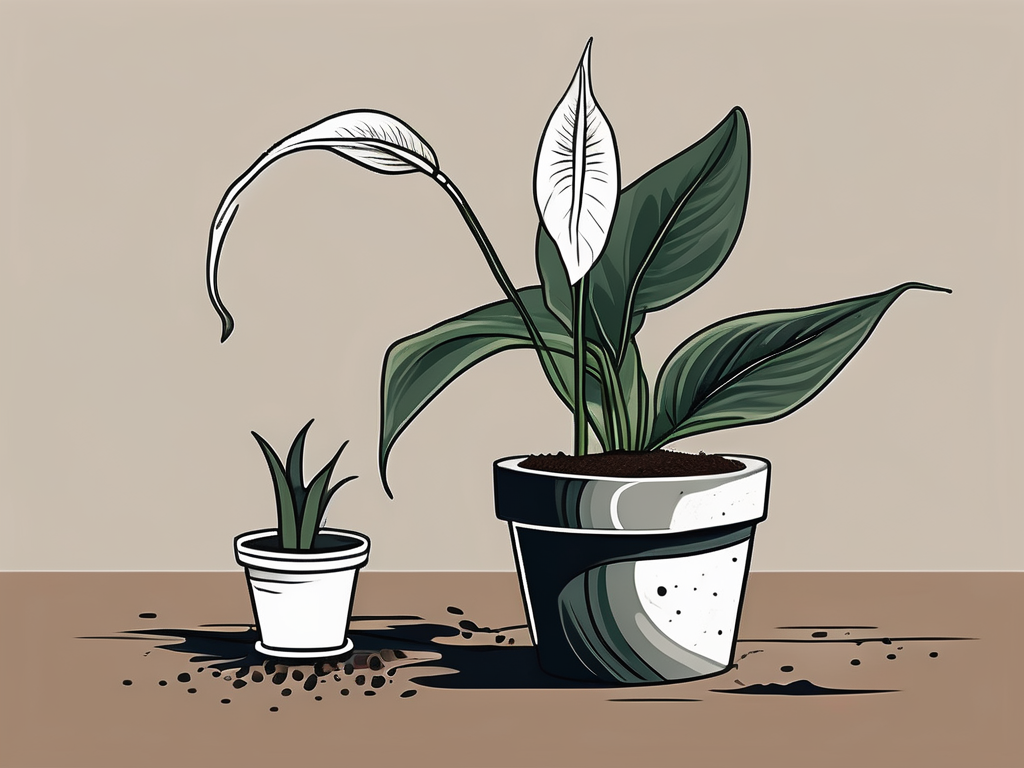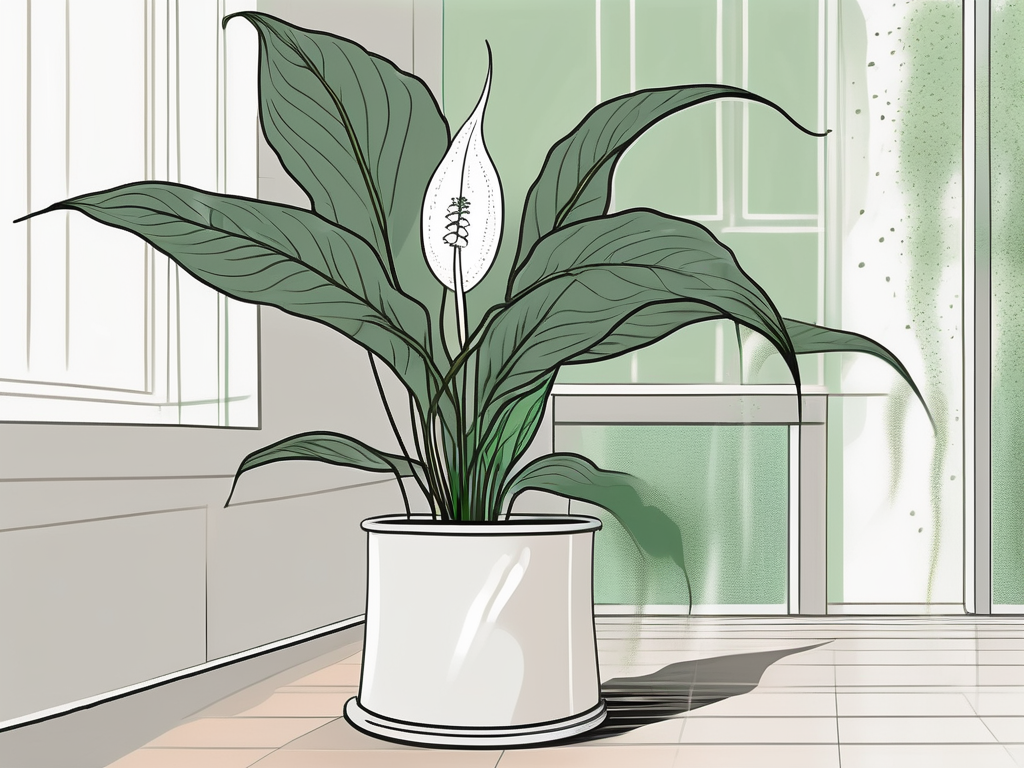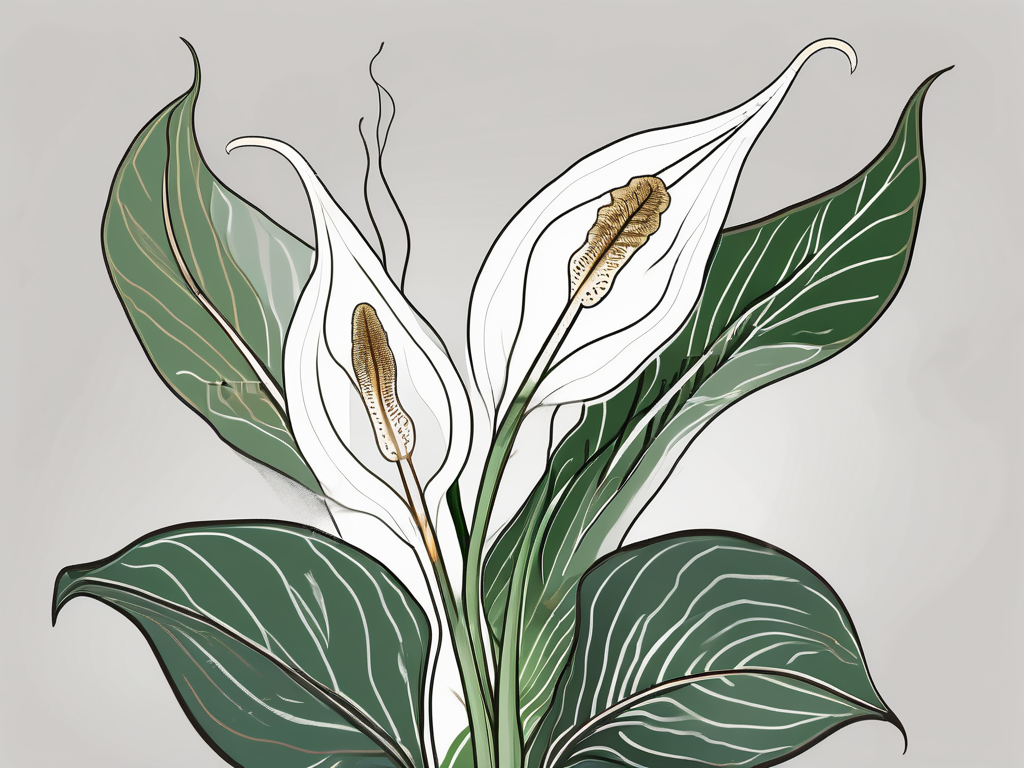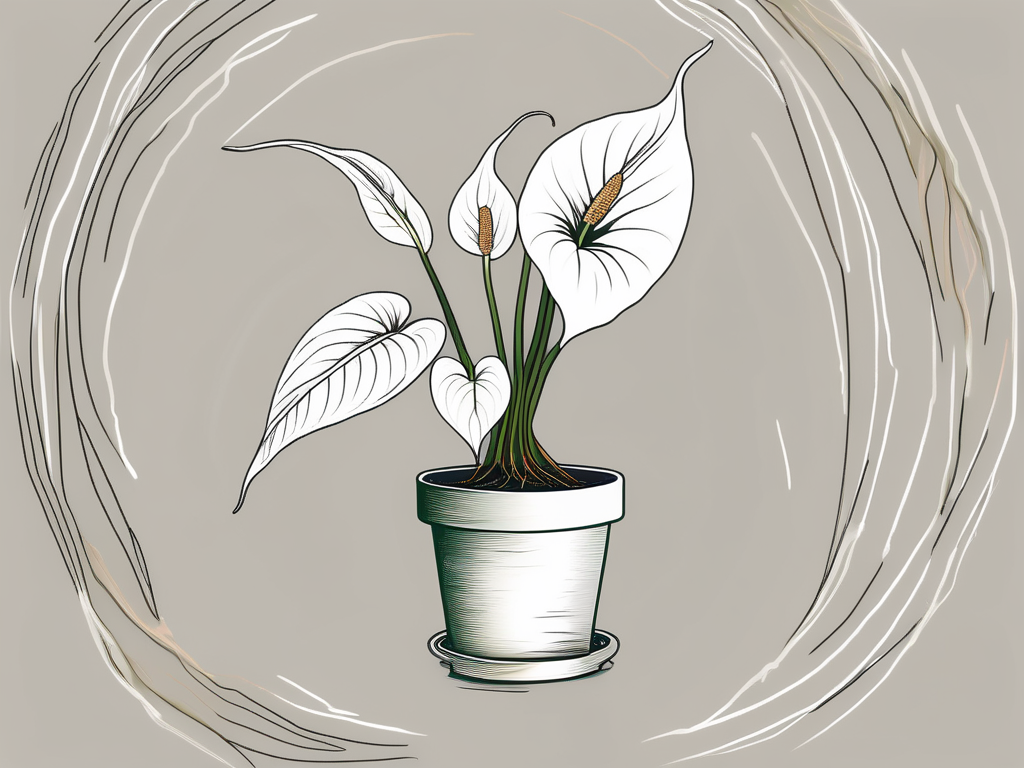
Peace lilies are a favorite among plant lovers for their lush green leaves and elegant white blooms. However, like any other houseplant, they come with their own set of challenges. One of the most common issues that peace lily owners face is the plant becoming root bound. This happens when the roots outgrow their pot, causing a host of problems for the plant. In this article, we’re going to dig into why this issue is important to address and how you can help your peace lily thrive.
We’ll cover everything from identifying signs of a root bound plant to understanding why it matters. We’ll also walk you through how to repot your peace lily and discuss ongoing care tips to prevent future problems. Whether you’re a seasoned plant parent or new to the world of indoor gardening, there’s something here for everyone.
Signs Your Peace Lily Is Root Bound
How do you know if your peace lily is root bound? There are a few telltale signs that your plant may have outgrown its pot. First, take a look at the roots. If they’re circling around the inside of the pot or poking out of the drainage holes, that’s a pretty clear indication that they need more room to grow. Another sign is if water seems to sit on top of the soil and takes a long time to drain. This happens because the soil is so compacted by the roots that water can’t penetrate it easily.
You might also notice that your peace lily isn’t looking as vibrant as it used to. Its leaves might start to yellow or wilt despite regular watering and care. You could also see the plant becoming top-heavy or even tipping over because the roots can’t anchor it properly. If you spot any of these symptoms, it’s time to take action.
Another indicator is slow growth. If your peace lily seems to have stopped growing altogether, it may be because the roots have no room to spread out. In contrast, an otherwise healthy plant with adequate space should show new leaf or flower growth regularly.
Why Being Root Bound Is a Problem
So, why is it such a big deal if your peace lily becomes root bound? For starters, the lack of space can lead to inadequate nutrient uptake. When roots are cramped, they can’t effectively absorb water and nutrients from the soil. This can result in nutrient deficiencies, which manifest as yellowing leaves and poor growth.
Moreover, a root bound plant can suffer from poor aeration. Roots need oxygen to thrive, and when they’re tightly packed, less air can circulate around them. This lack of oxygen can stress the plant, making it more susceptible to diseases and pests.
Being root bound can also lead to dehydration. You might find yourself watering your peace lily more often, but the water doesn’t seem to help. That’s because the roots are so densely packed that they can’t effectively absorb the moisture. Water either runs off the surface or sits at the bottom of the pot, potentially causing root rot.
Ultimately, addressing root bound issues is crucial for the overall health and longevity of your peace lily. By providing your plant with adequate space, you ensure it can continue to thrive and bring joy to your indoor space.
How to Safely Repot Your Peace Lily
When you’ve determined that your peace lily is root bound, the next step is repotting it. This might sound intimidating, but with a little guidance, it’s quite manageable. First, gather your supplies: a new pot that’s one to two inches larger in diameter than the current one, fresh potting soil, and a pair of clean scissors or pruning shears.
Begin by gently removing the peace lily from its current pot. You might need to carefully tip the pot on its side and coax the plant out by tapping the bottom of the pot. Once the plant is free, inspect the roots. If they’re tightly wound, you’ll need to tease them apart gently. This encourages them to grow outward in their new pot rather than continuing their circular growth pattern.
Trim any dead or overly long roots. It’s okay to remove up to one-third of the root mass if necessary. Place a layer of fresh potting soil in the bottom of the new pot, position the peace lily in the center, and fill in around it with additional soil. Make sure the plant is at the same depth it was in the previous pot.
Water the plant thoroughly to help the soil settle and eliminate any air pockets. Keep an eye on your peace lily over the next few weeks to ensure it’s adjusting well to its new home. Some wilting might occur initially, but it should bounce back quickly with proper care.
Choosing the Right Pot and Soil
When it comes to repotting your peace lily, choosing the right pot and soil is just as important as the process itself. Opt for a pot with drainage holes to prevent water from pooling at the bottom, which can lead to root rot. If you choose a decorative pot without holes, consider using it as a decorative outer pot with a functional inner pot that has drainage.
The size of the pot matters too. While it might be tempting to give your peace lily a lot of extra room, it’s better to increase the pot size gradually. A pot that’s too large can hold excess moisture, increasing the risk of root rot.
As for soil, a high-quality potting mix that retains moisture while providing good drainage is ideal. You can find potting soils specifically formulated for houseplants or make your own by mixing equal parts of peat moss, perlite, and vermiculite. This will provide the right balance of moisture retention and aeration.
Consistent care with the right pot and soil setup will make it easier for your peace lily to thrive and avoid becoming root bound again in the future.
Watering and Fertilizing After Repotting
After repotting, your peace lily will need some extra attention as it adjusts to its new environment. Watering is crucial, but it’s also easy to overdo it. Start by watering thoroughly immediately after repotting to help the soil settle. After that, allow the top inch of soil to dry out before watering again.
Pay attention to the plant’s signals. If the leaves start to droop, it might need water. However, if they become yellow and limp, it could be a sign of overwatering. Finding the right balance might take some trial and error, but your peace lily will let you know when it’s happy.
Fertilizing can also help your plant regain its strength. Use a balanced, water-soluble fertilizer once a month during the growing season, typically spring and summer. Be cautious not to over-fertilize, as this can cause more harm than good. Start with a diluted solution and adjust as needed based on the plant’s response.
With the right care, your peace lily should bounce back and continue to thrive, rewarding you with lush foliage and beautiful blooms.
Preventing Future Root Bound Issues
Now that you’ve tackled the root bound issue, how can you prevent it from happening again? Regular maintenance is key. Make it a habit to check your peace lily’s roots once a year, typically in the spring, to see if they’re outgrowing their pot. This is a good time to repot if needed, ensuring your plant has enough space to flourish.
In addition to repotting, keep an eye on the plant’s overall health. Address any signs of distress promptly, whether they’re due to watering issues, pest infestations, or nutrient deficiencies. A healthy plant is less likely to become root bound.
Pruning can also help manage the plant’s size and encourage healthy growth. Remove any dead or yellowing leaves regularly, and trim back any leggy stems to promote bushier growth.
By staying proactive, you can keep your peace lily happy and healthy, and enjoy its beauty for years to come.
Benefits of a Happy Peace Lily
When your peace lily is thriving, it brings numerous benefits to your indoor space. First and foremost, it’s a fantastic air purifier. Peace lilies are known for their ability to remove toxins like ammonia, benzene, and formaldehyde from the air, making your home a healthier place to live.
Beyond their air-cleaning abilities, peace lilies add a touch of elegance and tranquility to any room. Their glossy leaves and striking white flowers can complement a variety of interior styles, from modern to traditional.
Moreover, caring for a plant like a peace lily can be a rewarding experience. It provides a sense of accomplishment and connection to nature, which can be especially beneficial in our busy, tech-driven lives. Plus, having plants around has been shown to reduce stress and improve mood, making them excellent companions in any home.
Common Mistakes to Avoid
While caring for a peace lily isn’t overly complicated, there are a few common mistakes to watch out for. Overwatering is one of the biggest pitfalls. Peace lilies prefer to dry out slightly between waterings, so avoid the temptation to water on a strict schedule without checking the soil first.
Another mistake is placing the plant in direct sunlight. Peace lilies thrive in low to medium light conditions, so keep them away from harsh sun exposure, which can scorch the leaves.
Finally, neglecting to check the roots periodically can lead to root bound issues that could have been easily prevented. By staying vigilant and attentive to your peace lily’s needs, you can avoid these common pitfalls and keep your plant in top condition.
Ongoing Care and Maintenance
Once your peace lily is settled in its new pot, ongoing care is essential to keep it thriving. Continue monitoring its water needs, adjusting based on the season and environmental conditions. During the winter months, your plant may require less water due to slower growth and reduced light levels.
Keep an eye out for any signs of pests or diseases. Peace lilies are generally hardy, but they can still fall victim to common houseplant pests like spider mites or aphids. Regularly inspect the leaves and stems, and take action at the first sign of trouble to prevent an infestation from spreading.
In terms of light, find a spot with filtered light or indirect sunlight. Too much direct sun can damage the leaves, while too little light can stunt growth. A location near a north or east-facing window is often ideal.
By providing consistent, attentive care, your peace lily will continue to bring beauty and a sense of calm to your home.
Final Thoughts
Addressing root bound issues is vital for the health and well-being of your peace lily. By recognizing the signs and taking the necessary steps to repot and care for your plant, you’re setting it up for a long and vibrant life.
At Cafe Planta, we’re all about helping you nurture your green friends. Whether you need advice, supplies, or just want to chat about plants, we’re here for you. Feel free to email us or DM us on Instagram. Let’s keep those plants thriving together!














